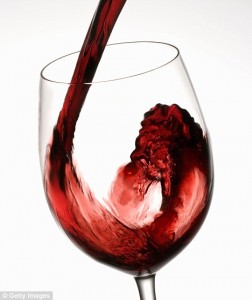
Article written for InShapeNews. See the original article here.
In the quest for the modern holy grail of longevity it seems we each have a theory on how much red wine is actually beneficial to our health. But in the wake of conflicting research and admist the absence of any tangible evidence, perhaps we should instead be asking, “Is the cup of life actually real?”
Most of the reported health benefits of red wine revolve around its non-alcoholic phenolic compounds. Scientifically speaking, this means hundreds of chemicals that when combined in varying quantities produce the colour, astringency, bitterness and aroma of a wine. Mostly it’s the compounds that produce dark red colours that reportedly provide the most promise for longevity.
There are a plethora of articles which refer to the health benefits of flavonoids anthocyanins and tannins, along with non-flavandoids, resveratrol and phenolic acids. These health claims seem to cover the whole gambit from sleep and blood sugar regulation to overall longevity, improved heart and brain health, cancer and common cold prevention as well as the reduction of inflammation, LDL (bad) cholesterol, dementia and stress. It’s not surprising that all this could lead you to conclude that red wine is the modern day cure-all for disease.
But the truth of the matter is there exists no conclusive research that proves red wine is good for you, and most of these theories still remain totally unproven. That’s not to say they don’t exist, but we do need to be mindful that the placebo effect may at times supersede real results, and that some of these reports may have even been founded on the Chinese Whispers of marketing departments.
What we do know is that wine contains alcohol, usually anywhere from nine to 16 percent. Ethyl alcohol, which relaxes us and reduces the harmful effects of stress, also dehydrates the body, numbs the senses and lowers inhibitions. Thus, before we know it our self-control heads right out the window as we reach for the pretzels, cheese and biscuits or that whole packet of Tim Tams.
We also know that alcohol is a simple carbohydrate and, depending on the residual sweetness and percentage alcohol of wine, 100 millilitres of it can contain 0.2 to 10 grams of sugar. So there are also calories to consider.
Now if you accept, as I do, that red wine can play a beneficial role in the modern diet, it seems the evidence for how much should be consumed is equally conflicting. It is suggested that you consume anything from two to four standard drinks two to seven days a week. I’m sure you could find an acceptable piece of research to suit your particular consumption preference.
Having recently completed my Responsible Service of Alcohol (RSA) certification, I’m further perplexed by the mismatch between the official standard drink of 100 millilitres and the fluctuation in standard pours of 120 to 200 millilitres. Of course, this may also depend on how well you know the barman.
With anything over four standard drinks, which equates to around half a bottle of wine, in a single session now being considered as ‘binge drinking’, it’s just as well Australian wine drinkers now prefer big bold Cabernets and Shiraz. After all we might just live longer.

